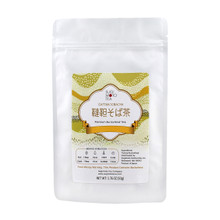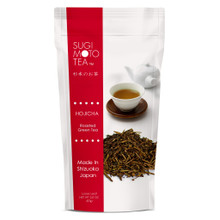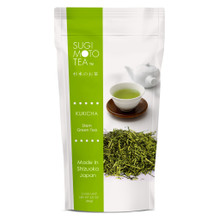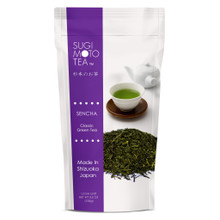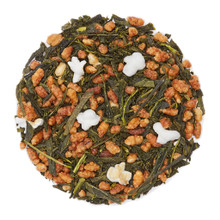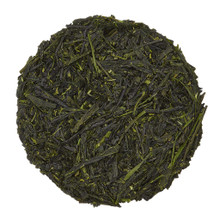Exploring Regional Variations in Japanese Tea
Japanese tea is celebrated worldwide for its craftsmanship and connection to centuries of tradition. Each tea-producing region in Japan brings its unique terroir, cultivation and production methods, along with local traditions, resulting in a wide array of flavors and aromas. In this blog, we’ll explore four key regions—Shizuoka, Kyoto (Uji), Kagoshima, and Fukuoka (Yame)—and discuss how Sugimoto Tea finds harmony among these regions to create exceptional blends.
Shizuoka: The Capital of Japanese Tea
Shizuoka has a rich legacy as one of the nation’s most prominent tea regions. Although it no longer holds the title of the largest tea producer—once accounting for 40% of Japan’s total production—Shizuoka is still referred to as the green tea capital of Japan. Its deep history in tea cultivation continues to influence the global tea industry, with the region being particularly known for Sencha Fukamushi, a deep-steamed green tea prized for its rich, smooth flavor.
Shizuoka’s diverse microclimates, mineral-rich volcanic soil, and the proximity to Mount Fuji provide ideal conditions for cultivating a wide range of teas. With over 20 sub-regions, Shizuoka offers a remarkable diversity of flavors, from sweet and umami-rich to bright and grassy. As a proud Shizuoka-based tea producer, Sugimoto Tea sources the majority of its teas from this historic region, ensuring every cup reflects the authenticity and craftsmanship that Shizuoka is known for.
Kyoto (Uji): The Heartland of Matcha
Uji, one of Japan’s most historic and revered tea regions, has been synonymous with exceptional tea for over 800 years. Renowned for producing some of Japan's finest green teas, Uji is particularly famous for its high-quality Matcha, which is celebrated for its smooth texture, rich umami, and vibrant green color. Uji’s legacy in tea cultivation is deeply embedded in the region’s culture, where tradition and innovation blend seamlessly to produce teas of unparalleled quality.
The region’s unique climate, nurtured by the Uji River and surrounding fertile soils, offers the perfect environment for tea cultivation. The careful craftsmanship passed down through generations ensures that Uji’s teas continue to be some of the most sought-after in Japan. While Sugimoto Tea does not currently source directly from Uji, we deeply respect and honor the region’s remarkable contributions to Japan’s tea culture.
Kagoshima: The Tea Powerhouse of Southern Japan
Located in the southern tip of Japan, Kagoshima has recently emerged as the country’s largest tea-producing region, renowned for both its scale and innovation. The region’s volcanic ash soil, ample sunshine, and subtropical climate create ideal conditions for tea cultivation. While Kagoshima is widely-recognized for its high-quality sencha, it is worth noting that shading techniques, commonly reserved for teas such as gyokuro or matcha, are applied to nearly all sencha grown in Kagoshima. Unlike other growing regions where shaded sencha is specifically labled as kabusecha or kabuse sencha, in Kagoshima, shaded sencha is simply considered the standard.
Kagoshima is also at the forefront of cultivar development, leading the way in cultivating new tea varieties to enhance flavor, resilience, and sustainability. Sugimoto Tea proudly features single-cultivar teas from Kagoshima, including:
Single-Cultivar Sencha Meiryoku: A vibrant green tea with milky notes, light umami, and fruity hints of grape and hibiscus.
- Single-Cultivar Sencha Meiryoku: A vibrant green tea with milky notes, light umami, and fruity hints of grape and hibiscus.
- Single-Cultivar Sencha Nanmei: This tea offers intense umami and sweet notes of spearmint and seaweed.
These teas reflect the region’s commitment to excellence and its ability to produce teas with bold, distinctive profiles.
Fukuoka (Yame): The Gyokuro Sanctuary
Yame, nestled in Fukuoka Prefecture, is synonymous with Gyokuro, one of Japan’s most revered teas. This region’s lush microclimate, with misty mornings and nutrient-rich soil, creates an ideal environment for cultivating shaded teas. Moreover, Yame is renowned as one of the finest regions for producing teas crafted in the traditional manner, such as the highly esteemed Dento Hon Gyokuro. By upholding centuries-old cultivation practices, Yame not only honors the legacy of Japanese tea, but ensures its continued refinement, offering a profound connection to the artistry and heritage of the tea-making tradition.
Sugimoto Tea’s offerings from Yame include:
- Shizuku Gyokuro: A Dento Hon Gyokuro with a strong umami flavor, sweet pea aroma, and a thick mouthfeel.
- Mizuki Matcha: A ceremonial-grade matcha with a creamy, nutty aroma and a smooth, rich finish.
These teas highlight the meticulous care and traditional techniques that Yame tea farmers uphold.
The Art of Blending at Sugimoto Tea
While single-origin and single-cultivar teas are gaining popularity, blending remains an essential aspect of Japanese tea production. At Sugimoto Tea, our master tea blender combines teas from different regions to achieve consistent, optimal flavors. This approach not only celebrates the strengths of each region but also creates unique, harmonious teas that go beyond what single-origin offerings can provide.
Blending is a true art form that demands a deep understanding of tea profiles, a commitment to quality, and an unwavering dedication to consistency. It allows us to create teas that offer balance, complexity, and a one-of-a-kind experience for our customers. Each blend is carefully crafted to bring out the best qualities of its components, ensuring a harmonious combination of flavors that maintain a consistent profile over time.
This focus on consistency means that if you enjoy one of our teas today, you can trust that it will deliver the same satisfying flavor year after year. Whether you’re enjoying it for the first time or revisiting an old favorite, our blends are designed to maintain their depth, richness, and quality, providing a dependable, enjoyable experience every time.
A Celebration of Tea’s Heritage and Craft
Japan’s tea-producing regions are as diverse as the teas they produce. From the bold fukamushi sencha of Shizuoka to the refined matcha of Uji and the exceptional gyokuro of Yame, each region contributes its own story and flavor to Japan’s varied tea culture. At Sugimoto Tea, we embrace this diversity by offering both single-cultivar teas that highlight the individuality of each region and expertly crafted blends that harmonize these unique characteristics.
Blending allows us to honor the distinct qualities of each tea while creating profiles that are greater than the sum of their parts. Whether you prefer the singular expression of a single-cultivar tea or the balanced complexity of a blend, exploring the regional variations in Japanese tea opens the door to a world of flavor and discovery. We invite you to try our teas and experience the rich heritage and artistry of Japanese tea firsthand.















